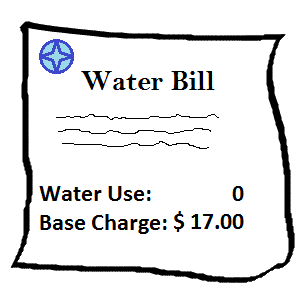As mentioned in last week’s blog post, some utilities are creatively setting varying base charges for subgroups of customer classes in order to more equitably distribute the (fixed) costs of the utility among customers with varying demands. One way this is being done is by tailoring the base charge based on each individual customer’s water use levels. No doubt, consumption-determined base charges are rare among water utilities today. However, there are some examples, and these examples demonstrate two methods of determining base charges based on water use.








